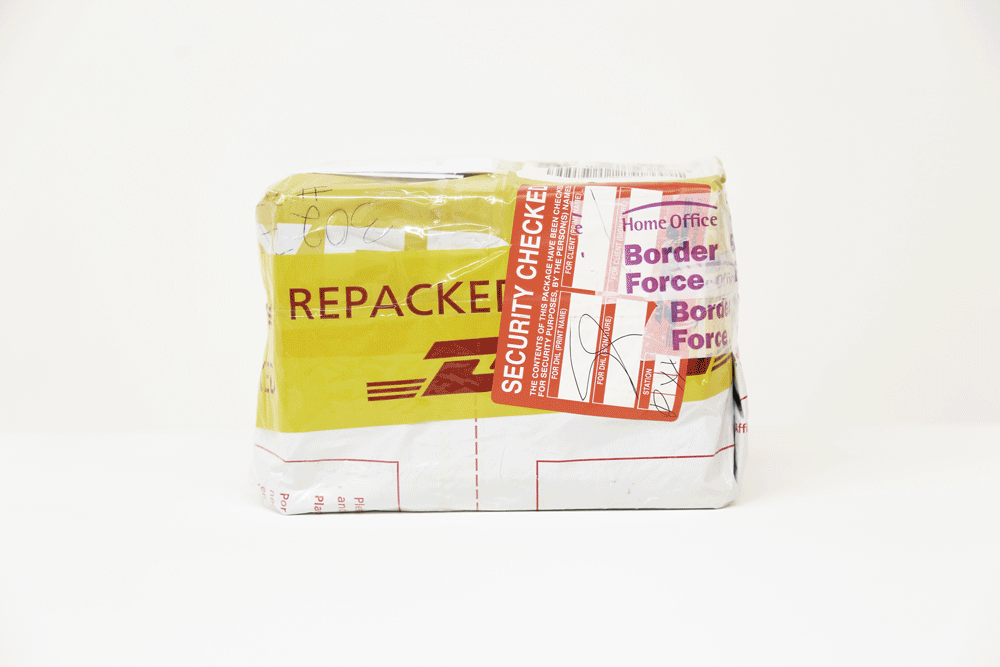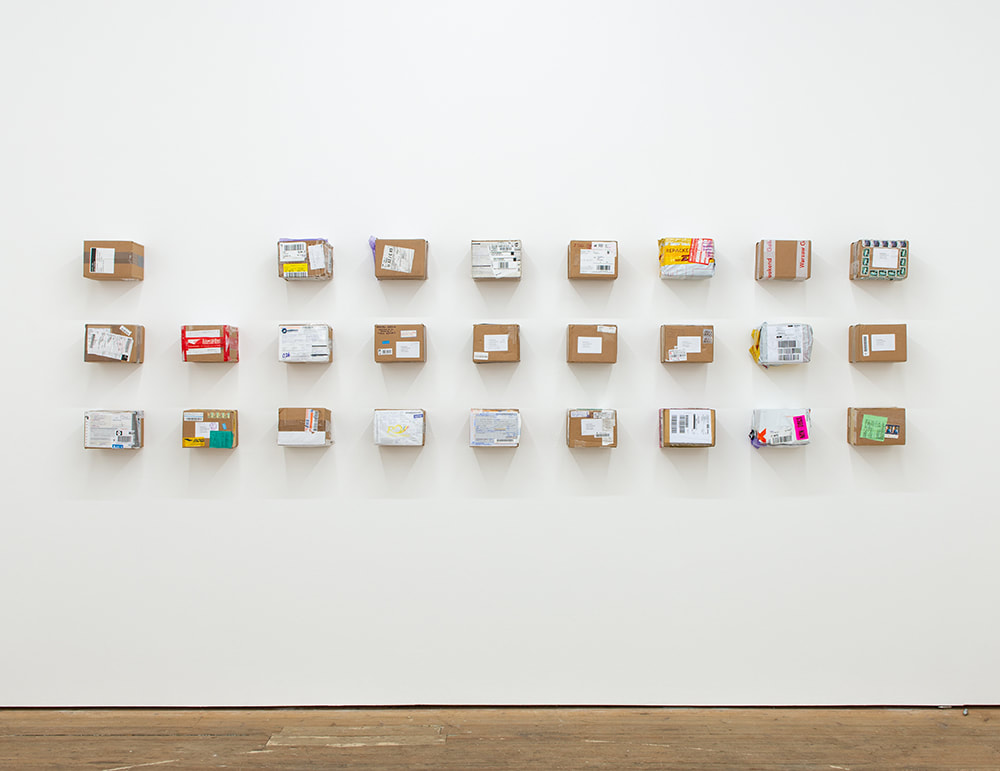|
International Airspace
2019-20 Postal boxes, Pyrex glass, air Dimensions variable |
The air that surrounds us today has been in circulation for centuries. In fact, within every breath we take it’s likely that we intake at least one molecule of the air exhaled by Caesar over two thousand years ago(1). Besides its longevity, air is also highly transient; the air we breathe in London will spread around the northern hemisphere within two weeks and across the entire globe within approximately two years. This gas we inhale, deep into our bodies with every breath, has already passed through countless bodies and borders. With the signing of the Paris Convention in 1919, national borders were elevated from the ground to dissect the atmosphere into national airspaces. Aligned with inland borders and set twelve nautical miles from coastlines, these new invisible boundaries responded to the recent arrival of air power. Governance of the sky formed the principles of co-operation needed for international air travel and created vast areas of shared in-between sky known as ‘international airspace’. The current trend for the devolution of international politics in favour of nationalism, has already began to test some of the most fundamental agreements between nations including the invisible accords that control our skies. The work International Airspace returns to the twenty-seven signing countries of the Paris Convention1 to form a new collaborative air space, one hundred years after the original agreement. Through exchange with people from each of the signatory countries, local air samples have been collected and combined within a single glass vessel to form a new fragile international airspace built on trust and collaboration. The signing states of the 1919 Paris Convention were; USA, Belgium, Bolivia, Brazil, UK, China, Cuba, Ecuador, France, Greece, Guatemala, Haiti, the Hedjaz, Honduras, Italy, Japan, Liberia, Nicaragua, Panama, Peru, Poland, Portugal, Romania, The Kingdom of Yugoslavia, Siam, Czechoslovakia, Uruguay. Realised with the support of Leicester University School of Chemistry. (1) Caeser's Last Breath / Sam Kean, Penguin Random House, 2018 |


